Exploring Munich’s World War II history is a deeply meaningful and sobering experience. This tour takes visitors on a journey through the city’s central role in the rise and fall of Nazi Germany. From the chilling Dachau Concentration Camp Memorial Site to the captivating insights into the Nazi party’s ascent, this comprehensive offering provides a powerful window into one of the darkest chapters of the 20th century. Witness firsthand the reconstructed structures and haunting exhibits that serve as a testament to the atrocities committed, and gain a deeper understanding of how this history continues to shape our world today.
Key Points
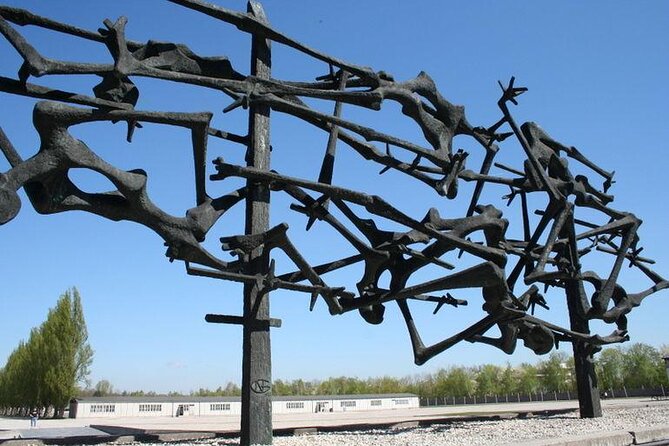
- This full-day tour explores the Dachau Concentration Camp Memorial Site and historical sites in Munich related to the rise and fall of Nazi Germany.
- Dachau was the first Nazi concentration camp, established in 1933, and over 200,000 prisoners were subjected to forced labor, torture, and execution at the site.
- The tour includes visits to buildings where the Nazi party originated and the Gestapo headquarters, as well as the site of the Beer Hall Putsch.
- The tour provides a comprehensive understanding of this turbulent period in Germany’s history through the lens of historical photographs, documents, and reconstructed structures.
- The tour concludes at Königsplatz, a former gathering place for Nazi rallies, offering a somber reflection on the atrocities of the Nazi regime.
Tour Overview
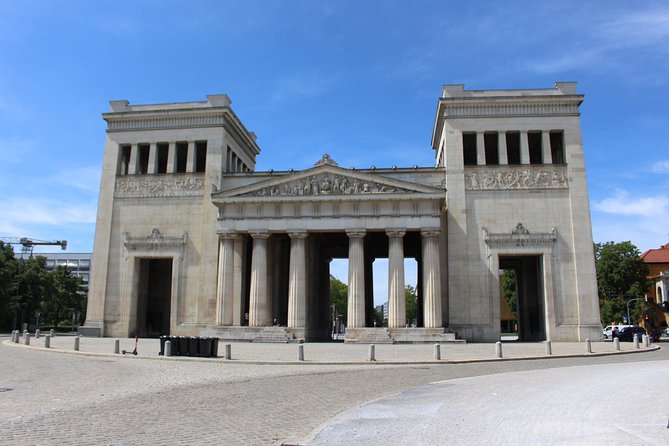
This full-day tour offers visitors a comprehensive exploration of Dachau Concentration Camp Memorial Site and Munich’s Third Reich history.
The small-group tour, with a maximum of 25 people, begins at the Dachau Concentration Camp Memorial Site, the first Nazi concentration camp in Germany. Visitors will see the haunting photographs, documents, reconstructed cell blocks, crematorium, and administration headquarters, while learning about the Nazis linked to this site, including Heinrich Himmler.
The tour then moves to Munich for a walking exploration of historical sites associated with the rise and fall of Adolf Hitler and Nazi Germany’s Third Reich.
The tour concludes at Königsplatz, near Munich Central Station.
You can also read our reviews of more tours and experiences in Munich.
Dachau Concentration Camp Memorial Site
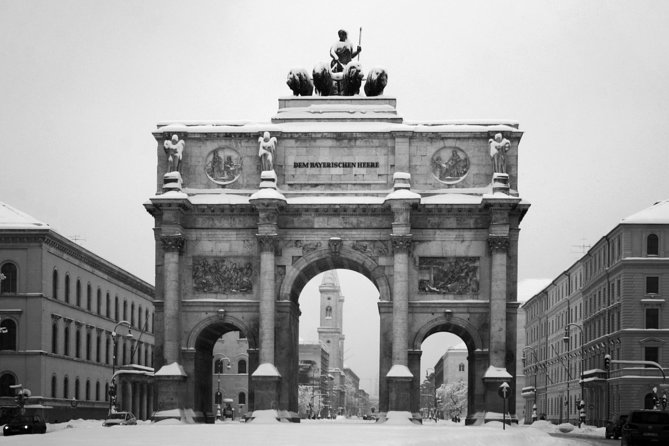
Arriving at the Dachau Concentration Camp Memorial Site, visitors witness the haunting remnants of the first Nazi concentration camp established in Germany. The site features powerful exhibits, including photographs, documents, and reconstructed cell blocks, that convey the horrors of the camp. Visitors can explore the crematorium and administration headquarters, learning about the key Nazis linked to this atrocity, such as Heinrich Himmler, who founded the camp. The memorial site serves as a solemn reminder of the past and a testament to the resilience of the human spirit.
| Fact | Dachau | Significance |
|---|---|---|
| Established | 1933 | First Nazi concentration camp in Germany |
| Commandant | Heinrich Himmler | Founder of the camp and SS leader |
| Prisoners | Over 200,000 | Included political opponents, Jews, and more |
| Purpose | Forced labor, torture, execution | Exemplify the horrors of the Nazi regime |
| Legacy | Memorial site | Educate and prevent future atrocities |
Third Reich Walking Tour
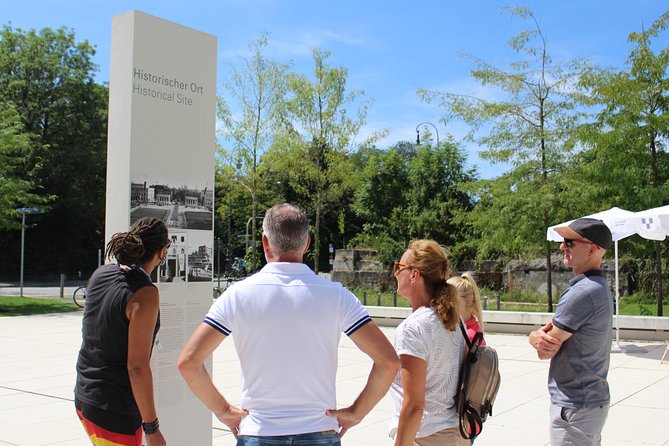
The Third Reich Walking Tour takes visitors on a journey through Munich’s historical sites associated with the rise and fall of Adolf Hitler and Nazi Germany’s Third Reich.
Guests will visit the building where Hitler first joined the Nazi party, the former Gestapo headquarters, and the site of the Beer Hall Putsch. These landmarks serve as a somber reminder of the Nazi regime’s dark history.
The tour concludes at Königsplatz, near Munich Central Station, providing participants with a comprehensive understanding of this turbulent period. Throughout the experience, the knowledgeable guide shares captivating insights, ensuring visitors gain a deeper appreciation for the events that shaped Germany’s past.
Arrival at Dachau

After concluding the Third Reich Walking Tour, visitors board the train and head to the Dachau Concentration Camp Memorial Site, the first Nazi concentration camp established in Germany.
Upon arrival, they’re greeted by the somber atmosphere of the memorial. The group takes in the historical photographs, documents, and reconstructed cell blocks that provide a poignant glimpse into the horrors that unfolded here.
As they walk the grounds, they learn about the camp’s founder, Heinrich Himmler, and the Nazis who orchestrated the persecution and murder of countless prisoners. The experience is a powerful and emotional one, leaving visitors with a deeper understanding of this dark chapter in history.
Photographs, Documents, and Reconstructed Structures
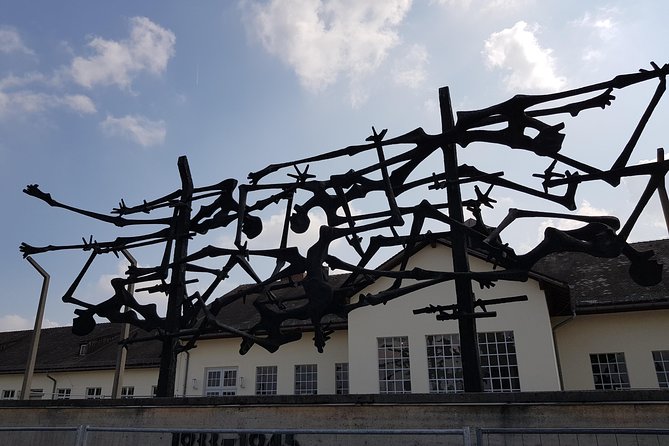
Haunting photographs and chilling documents line the walls of the Dachau Concentration Camp Memorial Site, bringing the grim realities of this place into stark focus.
Amidst the somber atmosphere, visitors encounter meticulously reconstructed cell blocks that evoke the inhumane conditions endured by prisoners during the camp’s dark history.
These structures, along with the administration headquarters and crematorium, serve as powerful reminders of the atrocities committed by the Nazi regime.
Through these reconstructions and preserved artifacts, the memorial site offers a visceral and sobering experience, allowing visitors to confront the horrors of the past and reflect on the lessons they hold for the present and future.
Nazi Figures Associated With Dachau
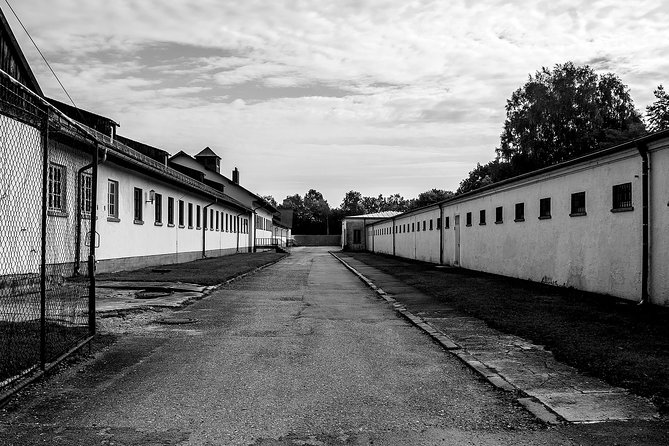
Among the chilling figures associated with the Dachau Concentration Camp was Heinrich Himmler, the Reichsführer-SS who established the camp as the first Nazi concentration camp in Germany. Himmler, a key architect of the Holocaust, oversaw the expansion of the camp and the implementation of brutal policies that led to the deaths of tens of thousands of prisoners. Another notorious figure was the Dachau camp guard who was known for his excessive cruelty towards inmates. The table below highlights some of the other Nazi officials connected to the Dachau camp:
| Name | Position | Role |
|---|---|---|
| Rudolf Höss | Commandant | Oversaw the expansion and operations of Dachau |
| Theodor Eicke | SS-Führer | Developed the organizational structure and regulations of Nazi concentration camps |
| Hans Loritz | Oberführer | Commanded the SS guard regiment at Dachau |
Historical Sites in Munich
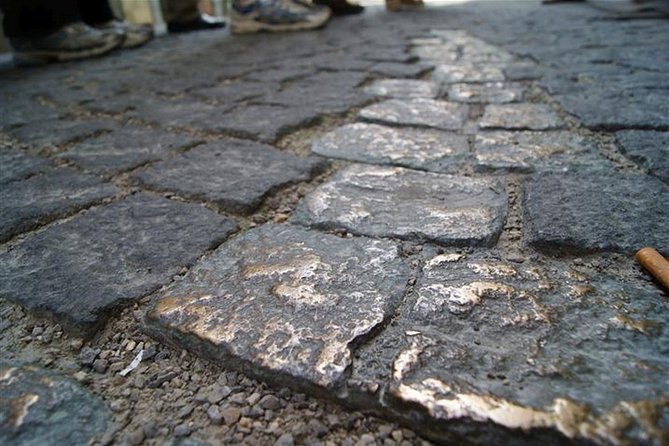
Munich’s historical sites offer a glimpse into the city’s tumultuous past under Nazi rule.
The Third Reich walking tour takes visitors to buildings and locations that were central to the rise and fall of Adolf Hitler’s regime, including the former Gestapo headquarters and the site of the ill-fated Beer Hall Putsch.
Attendees will learn about the key figures behind the Nazi party’s ascent, such as Heinrich Himmler, who founded the first concentration camp at Dachau.
The tour concludes at Königsplatz, once a gathering place for Nazi rallies.
Transportation and Inclusions/Exclusions

The tour includes transportation via train travel from Munich to Dachau and back, providing a convenient way for visitors to access the Dachau Concentration Camp Memorial Site.
Plus, the package covers the guided tour of the Dachau memorial and the Third Reich walking tour in Munich’s old town, though gratuities and food/drinks aren’t included.
The Dachau Concentration Camp Memorial Site tour allows guests to see the historical photographs, documents, and reconstructed cell blocks, as well as learn about the Nazis linked to the site.
The Third Reich walking tour in Munich covers the rise and fall of Adolf Hitler and Nazi Germany, visiting significant historical locations associated with the regime.
Frequently Asked Questions
Can I Take Pictures Inside the Dachau Camp?
Visitors can take photos at the Dachau Concentration Camp Memorial Site, but they’re asked to be respectful and avoid inappropriate behavior. Some areas may have restrictions, so it’s best to follow the guidance of the on-site staff.
Is the Tour Suitable for Children Under 12?
The tour may not be suitable for children under 12. The content and subject matter can be quite disturbing and heavy. It’s recommended that parents/guardians use discretion and assess if the tour is appropriate for their child.
Does the Tour Provide Lunch or Snacks?
The tour does not include lunch or snacks. Participants are responsible for bringing their own food and drinks for the day. Catering is not provided as part of the tour.
Can I Visit the Dachau Camp on My Own After the Tour?
Yes, visitors can explore the Dachau Concentration Camp Memorial Site on their own after the guided tour. The memorial site is open to the public and visitors can spend additional time there at their own pace.
Are There Any Additional Fees or Costs Not Mentioned?
The tour includes the Dachau Memorial Site visit and Third Reich walking tour. Gratuities and food/drinks are not included, but there are no additional fees or costs mentioned in the tour overview.
Recap
This comprehensive tour offers visitors a sobering yet essential exploration of Munich’s World War II history.
The Dachau Concentration Camp Memorial Site provides a powerful and immersive experience, while the walking tour in Munich reveals the city’s central role in the rise and fall of the Nazi regime.
Participants gain a deeper understanding of this dark chapter through powerful exhibits, reconstructed structures, and historical insights.
More Tour Reviews in Munich
- Running Tour Munich With Insider Tip Guarantee
- Vacation Photographer in Munich
- Day Tour to Bavaria From Munich Exploring Bavaria Hidden Gems
- Private Shopping Tour From Munich Hotels to Ingolstadt Outlet
- Private Day Trip to Landsberg Am Lech and Neuschwanstein
- Discover the Bavarian Alps From Munich – End of Tour in Salzburg
Not for you? Here's more things to do in Munich we have recnetly reviewed
- 4 Best Dinner Tours In Munich
- 12 Best Christmas Experiences In Munich
- 6 Best Dining Experiences In Munich
- 25 Best Food Tours In Munich
- 17 Best Lunch Experiences In Munich
- German Resistance To Hitler In Munich
- Discover Munich in a Retro Bulli
- Private Beer Tasting Tour in Munich With Oktoberfest Museum
- A Half Day Trip To Starnberg Lake With A Local: Private & Personalized
- Private Transfer From Munich to Nuremberg, English-Speaking Driver
- Alpine Ski Day From Munich
- Private Transfer From Munich To Kitzbuhel, English Speaking Driver
